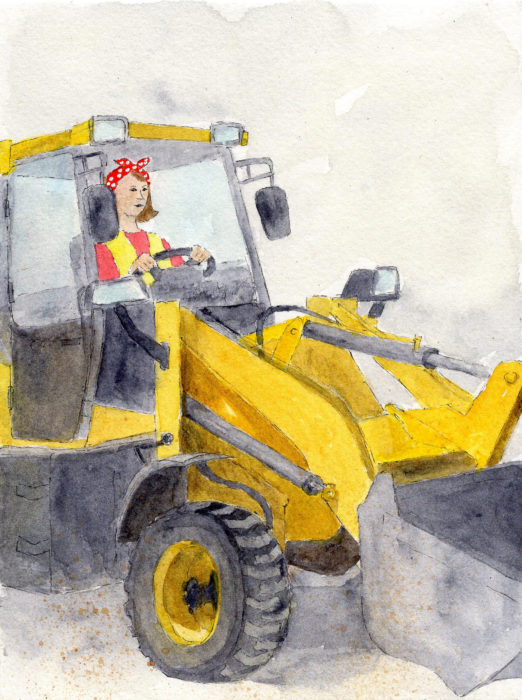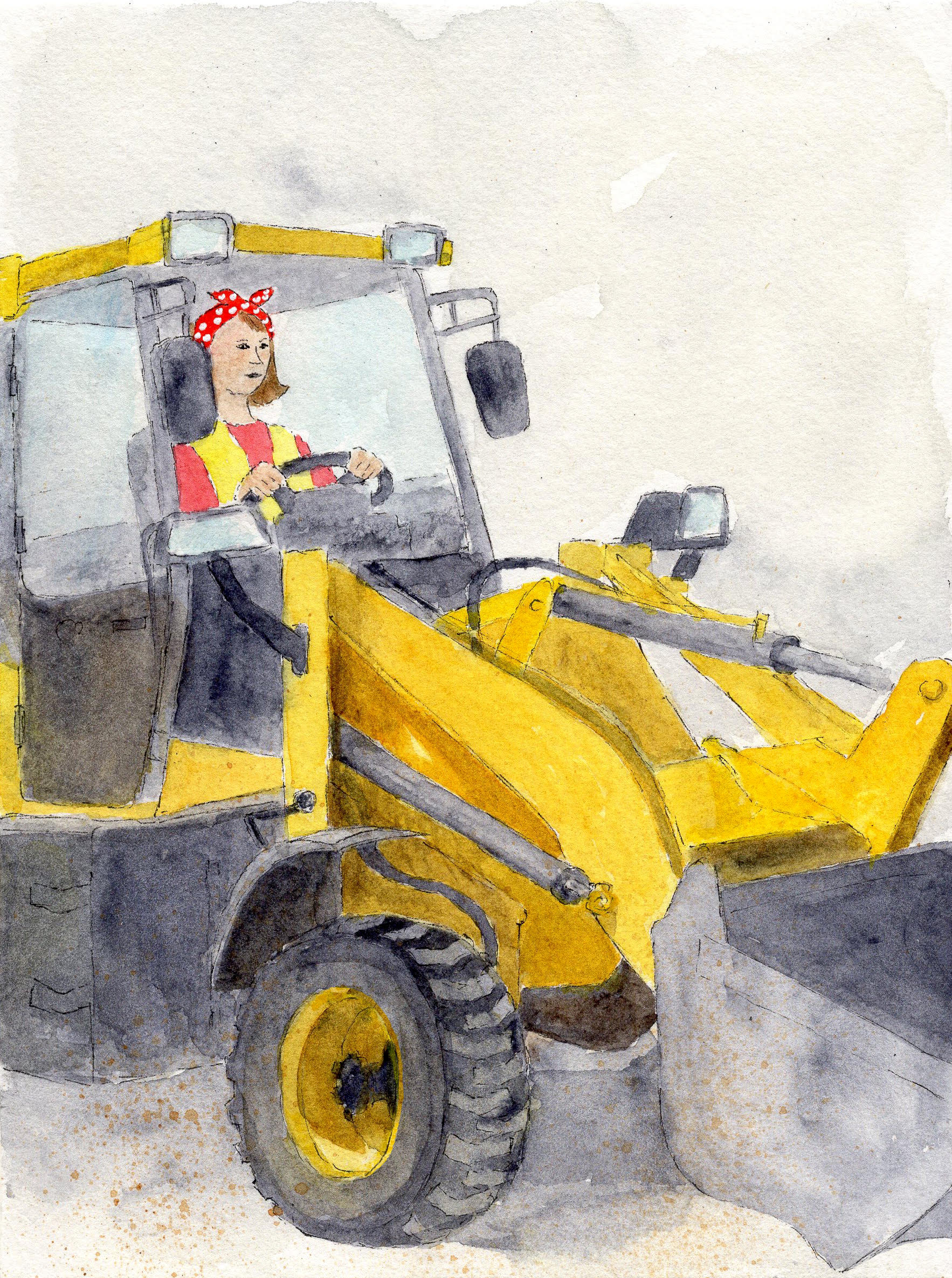
On a cold night in Los Angeles in 2012, Katherine Norve was outside monitoring at a construction site. At around 2 a.m., as she checked noise levels of equipment, it started to rain. Thoughts of her warm bed at home tempted her. “God, what did I get myself into?” she remembered thinking.
But Norve thought of her four kids at home, and decided to stick through the first few weeks of her new job — after all, it was her first apprenticeship.
Seven years later, Norve still works in construction, makes good money, has access to healthcare benefits for herself and her family, and loves her job. Now, more organizations like Women in Non-Traditional Employment Roles, the Los Angeles nonprofit that set up Norve with her apprenticeship, are working to get even more women into these positions.
At construction sites across the United States, there aren’t many women like Norve. Men hold more than 95 percent of those jobs, according to the U.S. Bureau of Labor Statistics. Community organizations have largely taken up the task to diversify the construction workforce, which is also more than 85 percent white. By partnering with labor unions and government employers, these groups create pipelines for women and people of color to enter the industry.
Workers in the construction and building trades often start out as apprentices with unions. After three to five years, they become journeymen and, in the Los Angeles area, bring home salaries of more than $80,000 a year. Unionized workers in these trades also get benefits like health care and pensions.
Making these kinds of well-paying, stable job opportunities more accessible to women is the mission of WINTER. “We’re the agency that not only trains women to get into the construction and building trades, but also advocates for companies to really look at the value of hiring women,” Alexandra Torres Galancid, WINTER’s executive director, said.
Norve is one of the hundreds of women who have gone through WINTER’s program, which consists of an orientation, bootcamp, interview process, and a 10-week pre-apprenticeship program that exposes women to different trades and gets them the certifications and skills required for apprenticeships.
Before joining WINTER, Norve was recently divorced and working at a public relations firm. After completing the program back in 2012, WINTER exposed her to the different trades in construction. Norve for the last five years has worked at Regional Connector Constructors, where she now operates cranes to move equipment like heavy beams around job sites.
“Some people are artists, and they find what they like and they’re passionate about it,” Norve said. “Well, I’m a construction worker, and I’m totally passionate about my job. I take pride in my work.”
As a single mother and the head of her household, she also takes pride in her ability to provide for her family on the wages she earns in construction.
Part of the struggle to diversify the construction and building trades lies in the traditional inroads: To get an apprenticeship, you typically need to know someone in the workforce. Often, family members ended up going into the same trades, said Ron Miller, executive secretary of the Los Angeles/Orange Counties Building and Construction Trades Council, which represents 48 local unions across 14 trades, and has the largest apprenticeship program in the country. A plumber for 40 years, Miller said he rarely ran into women working in the industry.
In recent years, however, the trades have emphasized hiring from more diverse talent pools, due in part to the need to replace retiring workers in the aging workforce. Thanks to groups like WINTER, as well as unions and companies looking to tap into different communities to fill their job openings, there are more ways in to these jobs than there used to be. However, women and people of color can still face hurdles, even if they do find programs that teach them skills for the job and connect them to apprenticeships.
Los Angeles native Lourdes Galdamez, 27, was working three jobs before joining WINTER. She did not get to see family much, and often missed her meals throughout the day. Time at home was spent getting ready for her next shift.
The first few weeks of the WINTER pre-apprenticeship program were also tough. During that time Galdamez lost her apartment and cellphone, because she was behind on payments. In the third week, her car got repossessed. But she knew the program could mean a turning point, so she made it work. She couch-surfed at relatives’ houses, and took multiple buses and carpooled to get to class.
Galdamez traced her motivation in those trying moments back to some of her final memories with her father, who worked as a handyman. In middle school, she sometimes got to help him after class. When Galdamez completed the WINTER program in January 2019 and got an apprenticeship with the Los Angeles County road maintenance department less than four months later, she felt accomplished.
“It’s a completely different turn of life,” Galdamez said. “There’s not a day in my life where I don’t wake up with a smile knowing that I’m going to just one job, and it’s something that I enjoy doing.” Galdamez gives a lot of credit to making that change happen to the support she found in her peers from WINTER, who she calls family.
In addition to community groups like WINTER, Miller said local unions are building support systems for a diversifying workforce by offering groups and conferences to help women network and share their experiences in the field.
Over the last decade, the building and construction trades have seen a small increase in women’s representation. According to a 2018 study from the Center for American Progress, women made up 6.2 percent of apprenticeship graduates in 2008. By 2017, the number was 7.3 percent.
While those numbers show there’s still much work to be done in terms of diversifying the industry, WINTER’s Torres Galancid said the time is ripe for more change. “There’s a lot of people talking about women in construction at this time. When I first started, it was just me,” she said.
She hopes the partnerships WINTER is building will lead to labor unions that reflect the locales they are based in. “I want to see at least 50 percent of workers in the construction and building trades be women,” Torres Galancid said.
So do the women who have already made it into the industry and changed their way of life. Galdamez said she has a job that has helped her learn to depend on herself. “[I want] the women out there to know that things are possible for us,” she said.

